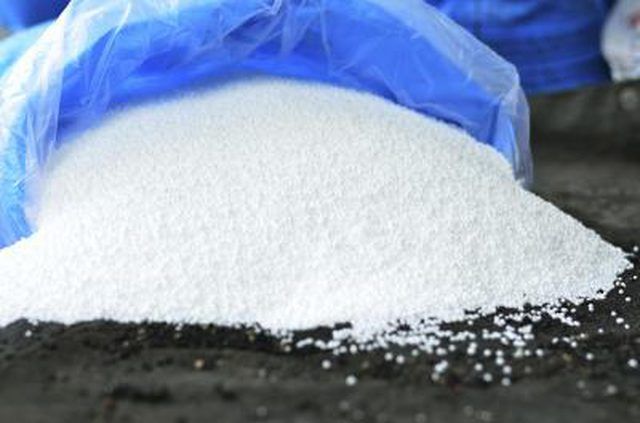Bulbs
Flower Basics
Flower Beds & Specialty Gardens
Flower Garden
Garden Furniture
Garden Gnomes
Garden Seeds
Garden Sheds
Garden Statues
Garden Tools & Supplies
Gardening Basics
Green & Organic
Groundcovers & Vines
Growing Annuals
Growing Basil
Growing Beans
Growing Berries
Growing Blueberries
Growing Cactus
Growing Corn
Growing Cotton
Growing Edibles
Growing Flowers
Growing Garlic
Growing Grapes
Growing Grass
Growing Herbs
Growing Jasmine
Growing Mint
Growing Mushrooms
Orchids
Growing Peanuts
Growing Perennials
Growing Plants
Growing Rosemary
Growing Roses
Growing Strawberries
Growing Sunflowers
Growing Thyme
Growing Tomatoes
Growing Tulips
Growing Vegetables
Herb Basics
Herb Garden
Indoor Growing
Landscaping Basics
Landscaping Patios
Landscaping Plants
Landscaping Shrubs
Landscaping Trees
Landscaping Walks & Pathways
Lawn Basics
Lawn Maintenance
Lawn Mowers
Lawn Ornaments
Lawn Planting
Lawn Tools
Outdoor Growing
Overall Landscape Planning
Pests, Weeds & Problems
Plant Basics
Rock Garden
Rose Garden
Shrubs
Soil
Specialty Gardens
Trees
Vegetable Garden
Yard Maintenance
Ammonium Sulfate As a Lawn Fertilizer
Ammonium Sulfate As a Lawn Fertilizer. Fertilizing your lawn with ammonium sulfate provides a quick-release boost for grass. Containing 21 percent nitrogen and 24 percent sulfur, and available as a granular and liquid feed, ammonium sulfate is a mineral fertilizer product suitable for cool-season and warm-season lawns. Its effects last four to six...

Fertilizing your lawn with ammonium sulfate provides a quick-release boost for grass. Containing 21 percent nitrogen and 24 percent sulfur, and available as a granular and liquid feed, ammonium sulfate is a mineral fertilizer product suitable for cool-season and warm-season lawns. Its effects last four to six weeks. Don't exceed recommended application rates because over-fertilizing with ammonium sulfate can burn grass. Application rates and timing vary according to the grass type.
Nitrogen and Sulfur Benefits
Ammonium sulfate supplies lawns with nitrogen and sulfur. Nitrogen is a major grass nutrient used to create chlorophyll, which grass needs to live and grow, and sulfur is a secondary nutrient. Soils low in organic matter may lack sulfur, which causes yellowing older leaves, slow growth, and delayed maturity in grass. Ammonium sulfate supplies nitrogen and sulfur in a water-soluble form, so that as soon as it rains or the lawn is irrigated, nutrients are immediately available to grass roots. Ammonium sulfate is cheaper than slow-release fertilizers per pound of nitrogen and produces a rapid greening effect even at low temperatures.
Precautions and Downsides
Ammonium sulfate should be used cautiously and as part of a wider lawn-care program. Lawn fertilizers are categorized according to their salt index, which states their potential for burning grass. Ammonium sulfate's salt index is 69, indicating a high burn potential when applied in excessive amounts. Ammonium sulfate also breaks down quickly on contact with water, which means it's at high risk of leaching into groundwater and must be reapplied frequently for a long-lasting effect. Its formulation is 21-0-0, which means it contains no phosphorous or potassium, two major plant nutrients.
Application Rates
Lawns require regular, small applications of ammonium sulfate. Zoysiagrass (Zoysia spp.), which is a warm-season grass hardy in U.S. Department of Agriculture plant hardiness zones 5 through 10, requires 2 to 4 pounds of nitrogen a year per 1,000 square feet. Ammonium sulfate contains 21 percent nitrogen. To calculate 1 pound of actual nitrogen divide 100 by 21, which gives 4.76. Warm-season grasses require monthly fertilizer applications from spring through the growing season, or about eight applications. To supply 4 pounds of nitrogen per year, apply 2/3 pound ammonium sulfate at each application. Tall fescue (Festuca arundinacea), a cool-season grass hardy in USDA zones 4 through 7, also requires 2 to 4 pounds per 1,000 square feet per year, but cool-season grasses are fertilized in midspring, early summer, late summer and late fall. To supply 4 pounds of nitrogen, apply 2/3 pound of ammonium sulfate two weeks apart at each seasonal application. Alternatively, apply ammonium sulfate according to the supplier's instructions.
Ammonium Sulfate Alternatives
Slow-release lawn fertilizers provide less risky alternatives to ammonium sulfate. Dried and composted manures, composted and activated sewage sludges, fish scraps and meal, seed meal, feather meal, and hoof and horn meal are some natural slow-release lawn fertilizers that provide a longer duration of nitrogen release than ammonium sulfate and may be less likely to contaminate groundwater. Ureaform is a manufactured fertilizer that contains quick-release and slow-release portions, and supplies nitrogen at a steady rate when applied over several years. Soil pH, temperature, soil moisture and oxygen affect the breakdown rates of natural lawn fertilizers and ureaform.